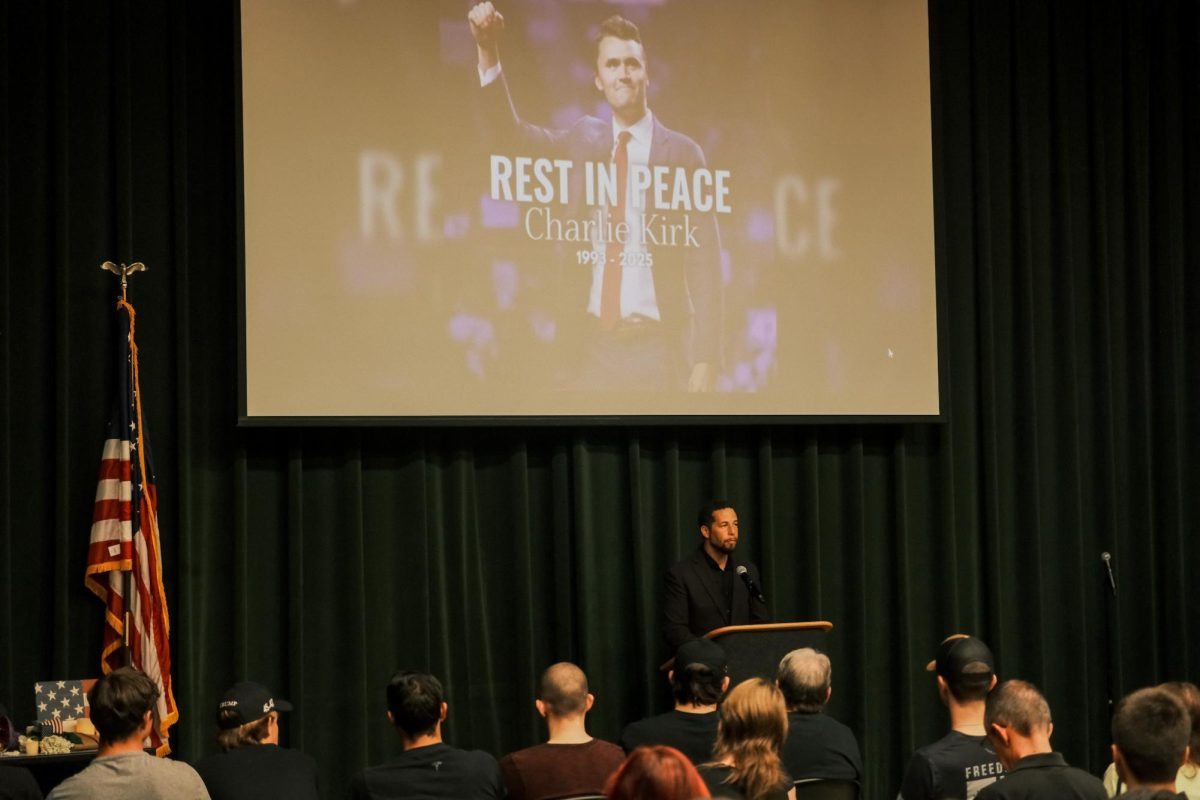Campus implements new student ID method
September 18, 2007
Of all the concerns on the mind of a college student, identity theft is typically not one of them. With technological advances like high-speed Internet and services such as online shopping and banking, young adults are spending more time online, where they are increasingly sharing personal information.
In its annual report released earlier this year, the Federal Trade Commission found that young people between the ages of 18 and 29 experienced the highest level of identity theft.
According to the Commission’s website, identity theft occurs when someone uses personally identifying information to commit fraud or other crimes. One key piece of information, commonly used by college students, that leads to many identity theft cases is social security numbers.
“College students should be extremely careful when disclosing personal information, especially their social security number,” said Johnny May, a certified identity theft risk management specialist and author of “Johnny May’s Guide to Preventing Identity Theft.”
Social security numbers are typically used as primary identifiers for students and employees of state and local agencies, including colleges and universities.
In 2004, then-state senator Debra Bowen authored a series of laws aimed at limiting the use of social security numbers by colleges and universities. According to her website, Bowen’s intent was to protect social security numbers from being stolen.
One part of the law, California Civil Code section 1798.85, stated that California colleges and universities could no longer publicly post or display an individual’s social security number, print an individual’s social security number on any materials that are mailed to the individual or require an individual to transmit his or her social security number over the Internet unless the connection is secure or the social security number is encrypted.
This section, however, does not prevent the collection, use or release of a social security number as required by state and federal law or the use of a social security number for internal verification or administrative purposes.
Another part of the law made it illegal to print or imbed a person’s social security number on any card, like Sacramento State’s OneCard, required for the individual to access products or services provided by a college or university.
After the law was officially passed in 2004, the California State University system was given until July 1, 2005 to follow the mandate.
To comply with this law, Sacramento State has begun assigning randomly selected ID numbers and embedding the number on the magnetic strip located on the back of the OneCard, a OneCard employee said. For security reasons, a student’s social security number is not printed or imbedded on the OneCard.
While these random ID numbers are assigned to students, Sacramento State still uses social security numbers as the main way of identifying its students and faculty, something not outlined in Bowen’s law.
Other California State Universities have taken extra measures to ensure the safety of their students.
In 2004, California State University Monterey Bay discontinued the use of social security numbers as a primary identifier and randomly assigned a new nine-digit number to all students.
In 2005, California State University Chico implemented similar procedures.
CSU campuses in Fresno, Bakersfield, San Francisco and San Jose are also among those that have started using ID numbers to identify students instead of social security numbers.
“The less a student has to use his or her social security number, the safer it is,” May said.
A social security number is not the only piece information identity thieves can use against their victims. Credit card and bank account numbers are also used to defraud potential identity theft victims.
There are many ways to reduce the risk of becoming a victim of identity theft. Shredding documents containing personal information, opting out of pre-approved credit card offers, obtaining an updated credit report, installing antivirus software and using firewalls are just a few ways for students to stay secure.
Unfortunately, most young adults are not proactive when it comes to protecting themselves.
“I think (students) believe they don’t have anything worth losing,” May said. “A lot of (students) work part time or for minimum wage, some don’t work at all. The reality is this makes is easier for identity theft to occur.”
The 2007 Identity Fraud Survey Report, released by Javelin Strategy & Research, found that adult victims ages 18 to 24 are the group least likely to take easy, but important, safeguards against identity theft.
Sometimes, however, no amount of preparation can prevent cases of identity theft.
“My purse was stolen from my car about six months ago,” said Yvonne Thornton, senior mathematics major. “The thief ended up spending almost $1,000 total on two different cards that were in my wallet.”
Although it was definitely an unfortunate situation, Thornton knows she will not remain discouraged forever.
“If it weren’t for the helping power of time, I would have felt a lot worse in the long run,” Thornton said.
Thornton has since ordered a credit report and is in the process of making sure that her monetary loss is the only damage done.
Perhaps the best preventative measure against identity theft is overall awareness of its causes and consequences.
“Identity theft isn’t something I always think about, but I know that I don’t want to become a victim,” said Jennifer Vance Trup, senior liberal studies major. “So, I try to take the necessary steps so that this sort of thing doesn’t happen to me.”
May also stressed the importance of knowledge and understanding.
“Young people are extremely susceptible to identity theft and for this reason they need to be educated on this topic,” May said.
May has developed a new college level identity theft prevention course, the first of its kind in the country, and is currently teaching it at two colleges in Michigan.
“College students need to treat their personal information as if it were gold,” May said. Once it is out there, you can’t take it back.”
Michael Calvillo can be reached at [email protected].






























































































































